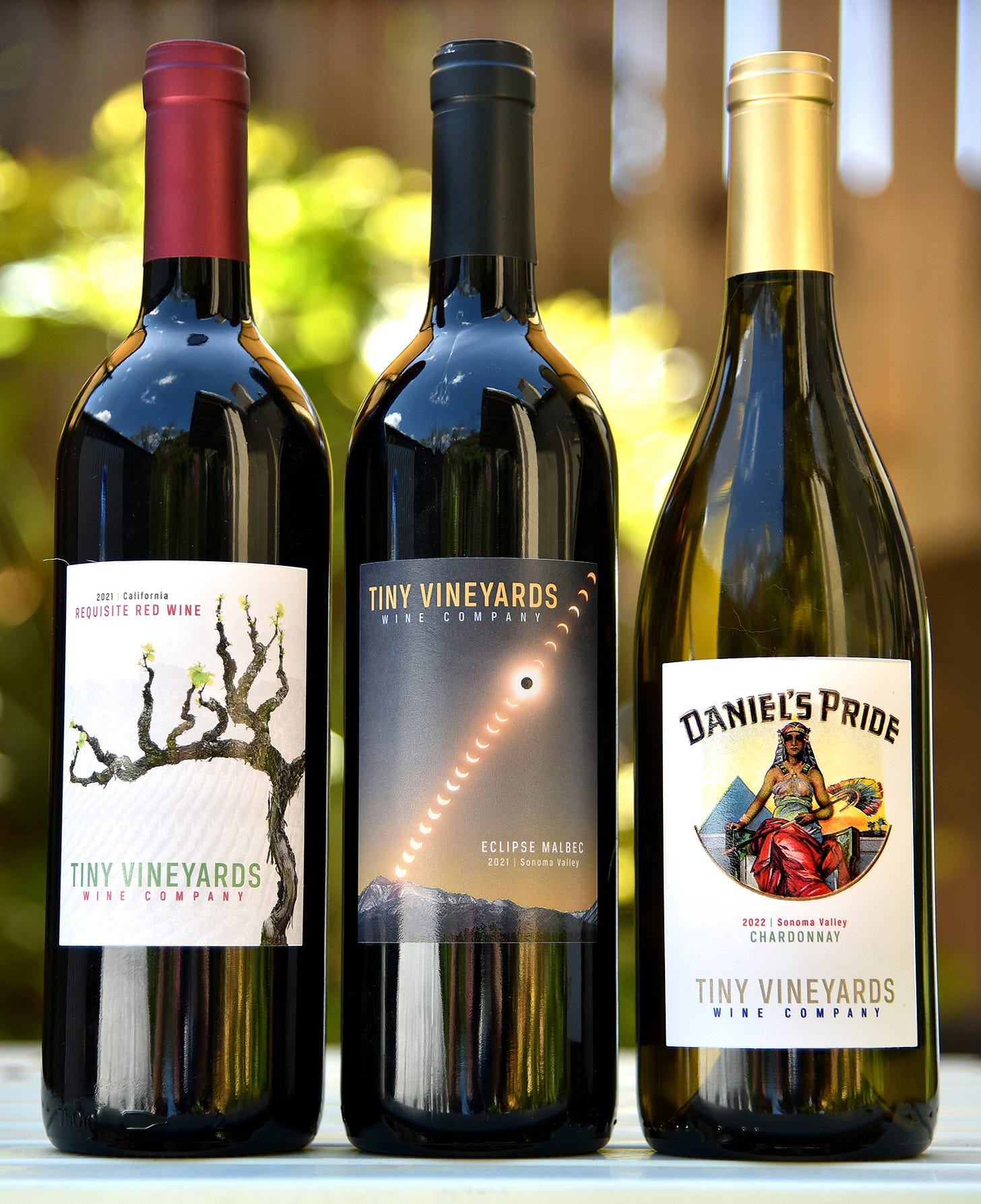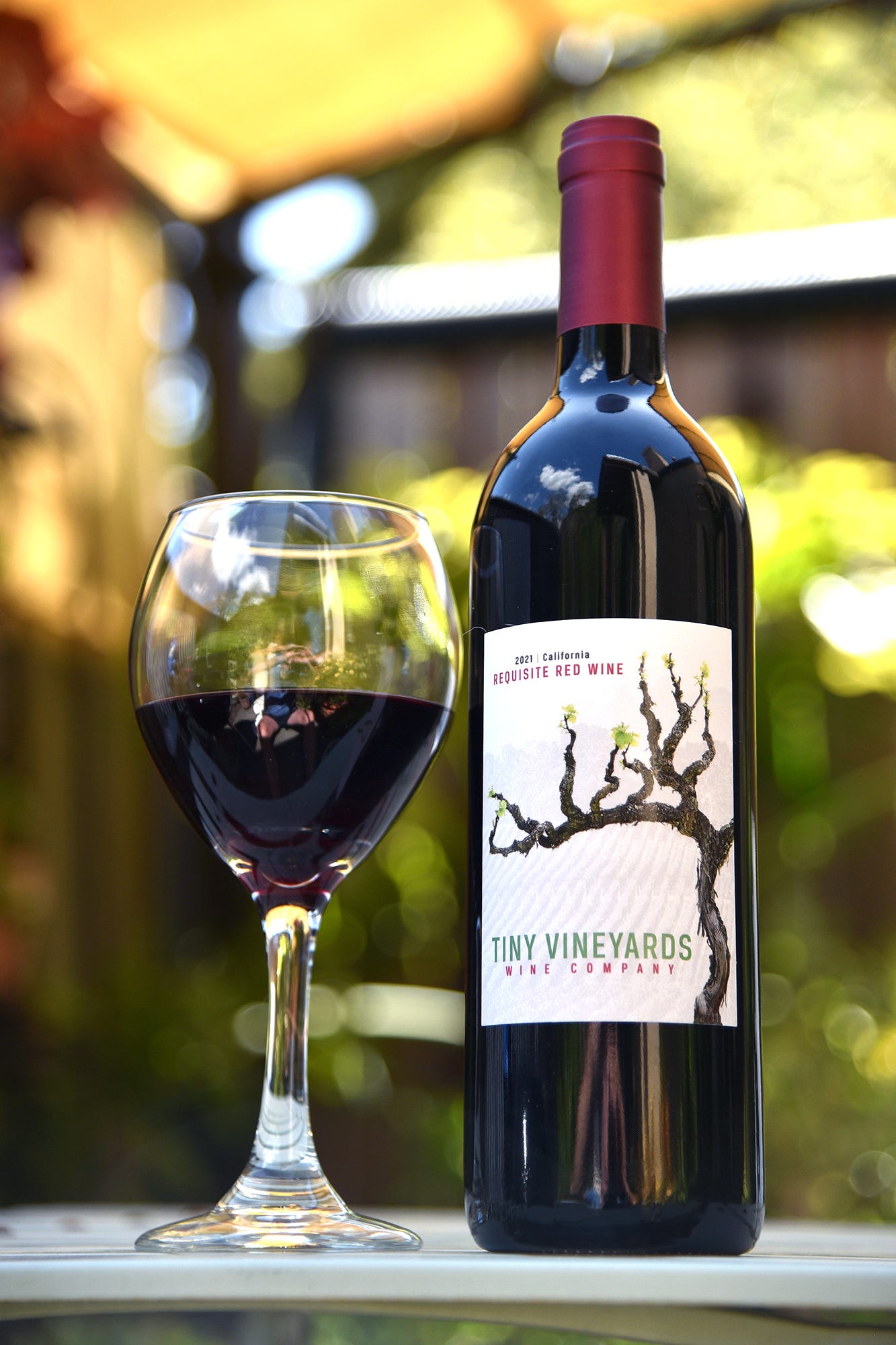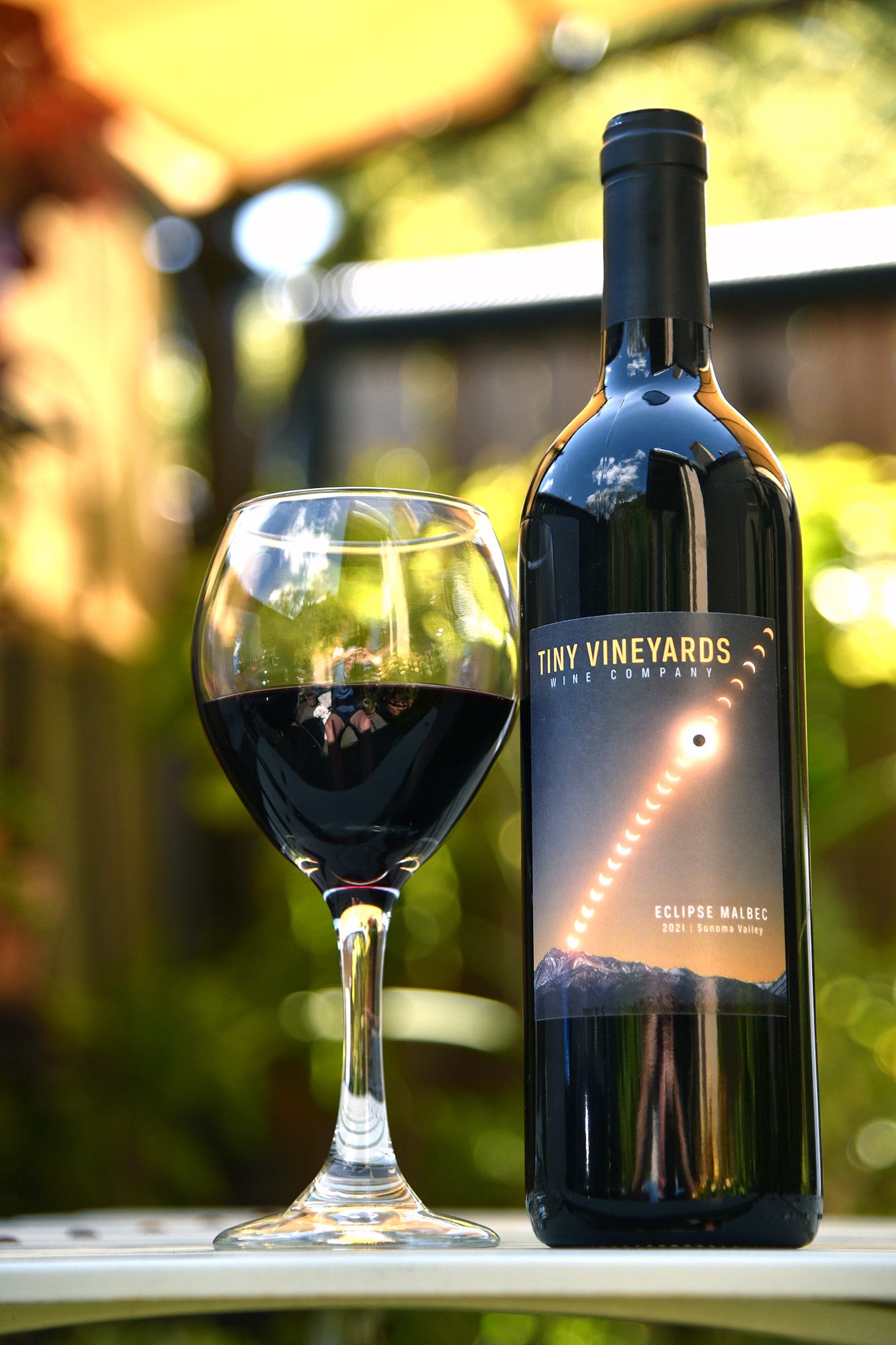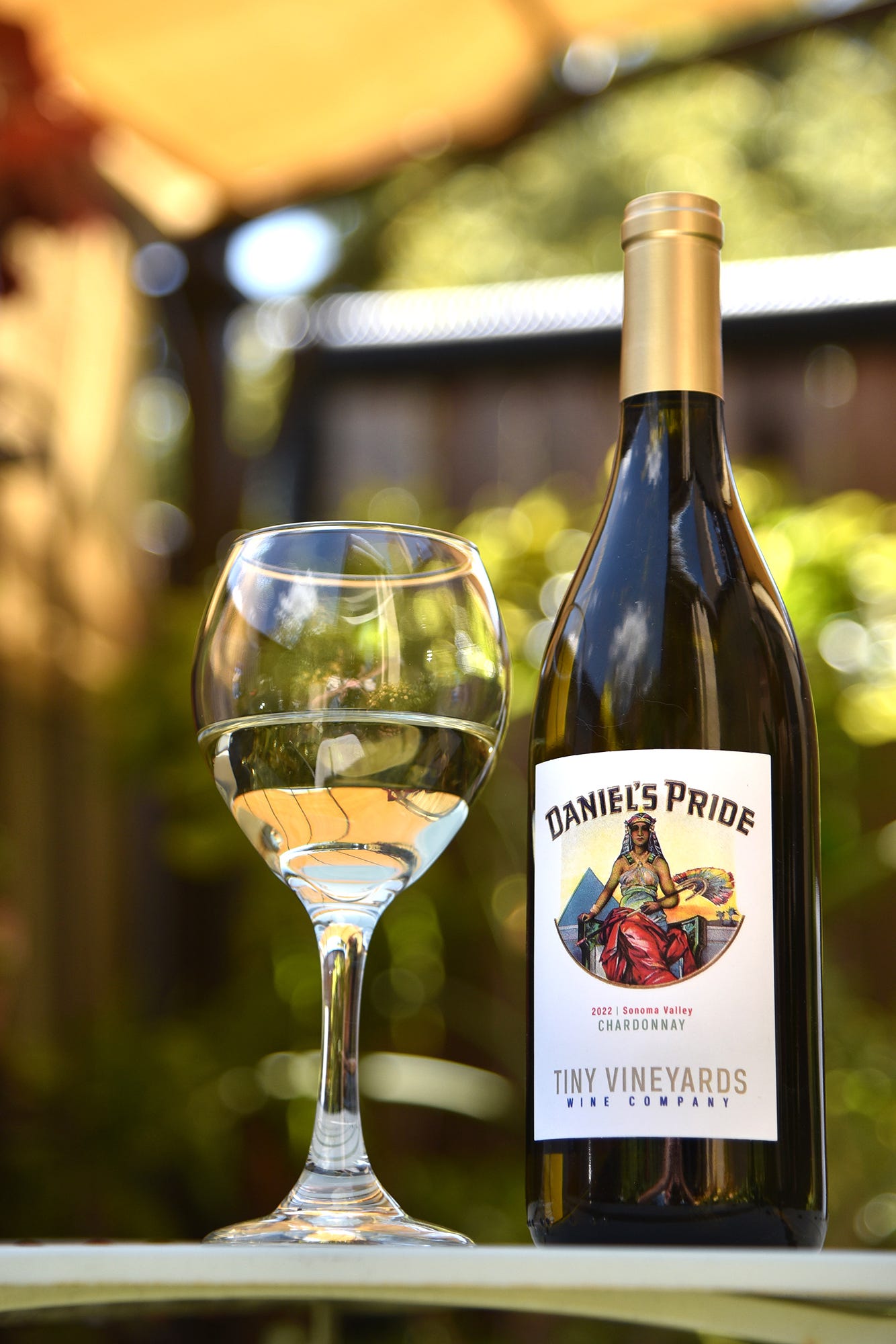It tasted like a shade of white near blue; it tasted like the idea of pearls; it tasted like a memory nearly grasped but lost at the last moment. ~ Catherynne M. Valente
The better a wine, the harder it is to describe, and the best are beyond words. ~ Neel Burton
Wine is complicated
When I bottled the first wines I ever made, back in the fall of 2018, I ended up with about two cases of Cabernet Sauvignon and two cases of a red field blend—about 50 bottles in all. I’ll never forget what my friend, and forever wine guru, Ken Wornick told me at that point, after the months of late night telephone calls, near panic attacks, and the endless questions I had tortured him with.
“Now, I want you to put those bottles away in the back of some closet where it’s cool and dark, and completely forget about them for a few months”
“WHAT? A FEW MONTHS?! When are we going to drink them?”
And therein emerged the single most truthful tenet in winemaking. Wait.
Even if you are lucky enough to make it through fermentation, and then a year or more of barrel aging without your wine being compromised by one fault or another, like funky reduction problems, high VA, bad bacteria loads, nasty yeasts, out of balance pH and acidity, frustrating buffering behavior—sadly, the list goes on—you’re still not to your final product.
Because there never is one.
“Nothing in wine is ever static. Even once in the bottle, acids and alcohols react to form new compounds. tannins soften, other compounds can dissolve, only to combine again in another fashion. These processes happen constantly and at different rates. Every time you open a bottle, you catch the wine at another stage in its development, with new and different nuances.”
All this from a recent essay in Wine Enthusiast by Master of Wine Anne Krebiehl.[Attaining a Master of Wine designation is an extremely rigorous process that takes a minimum of three years study. There are currently only 416 Masters of Wine in the whole world.]
“When wines are young, we taste their primary flavors, like grassiness in Sauvignon Blanc, plum in Merlot, apricot in Viognier or citrus in Riesling. We may also notice some secondary notes associated with winemaking techniques, like the vanilla flavor of oak or buttery nuances from malolactic fermentation.
“When wines age, we start speaking about tertiary notes, or flavors that come from development. This could mean young, bold notions of fresh fruit that become gradually more subdued and reminiscent of dried fruit. Other flavors, previously hidden by bold primary notes, come to the fore, like honey, herbal notes, hay, mushroom, stone and earth.”

Under Ken’s tutelage, I would come to learn that all wines have a sweet spot, a time in their development where everything comes together in a perfect union. For many whites, most rosés, and even a few reds, that perfect time to drink them may be just after they are bottled (with maybe a month or so to get over any bottle shock from bottling) and extend for a year or two. Those $12 spaghetti wines you buy at Safeway? Most of those have been bottle-aged for a year before being released.
Krebiehl goes on to explain, “It’s often assumed that only the finest, most expensive wines can age, but any well-made wine that has a real concentration of flavor, with a good balance of alcohol, acidity and texture stands a good chance of developing. Entry-level wines from good wineries can easily age from three to five years.
“But some wines are made specifically for extended aging, like very extracted reds with bold tannins that need some time to mellow. These comprise many of the fine wines of classic European and New World regions.”
So where do the fine wines of Tiny Vineyards Wine Company, Vintage 2021 stand? Now that they are finally in the bottle, you didn’t really expect me to just— “stick them in the back of some closet where it’s cool and dark, and completely forget about them for a few months”—now did you? Heck, by the time you read this they will have all been in glass for over three weeks! Time to establish a “taste baseline” to compare them against themselves as they develop. So let’s get on with it!
2021 Requisite Red Blend
And her sweet red lips on these lips of mine / Burned like the ruby fire set / In the swinging lamp of a crimson shrine, / Or the bleeding wounds of the pomegranate, / Or the heart of the lotus drenched and wet / With the spilt-out blood of the rose-red wine. ~ Oscar Wilde
When I decided to make wine seriously, I had one goal above all others. I wanted to make a signature wine that I would be happy drinking every day—a simple go-to wine that probably wouldn’t taste exactly the same from one year to the next, but rather would express the specific conditions and terroir of its particular vintage. I wanted something complex and structured enough for a special event, but not too big or heavy. I wanted it so delicious and easily drinkable I could count on it for any meal.
I knew this wine would probably have to be a blend—to keep my attention—as any single varietal would surely become repetitious over time. So, I settled on what I would call a “California heritage blend,” Zinfandel-based with contributions of Syrah, Petite Syrah and Cabernet. I’ve made iterations of this wine as a home winemaker for three vintages and although no two were ever quite alike, during that time the blend earned two silver medals, two gold medals, and a Best-in-Class designation from the two largest amateur winemaking competitions in America.
Okay, so I just tasted the 2021 Vintage this past week—my fourth edition of this blend. And, with it having just gone through the disturbance of bottling, I found it a bit in shock, or tight. “Tight" being a description wine geeks give to a wine that needs time and oxygen, maybe even decanting, to “open up.” To wit, I could tell that this Requisite Red Blend was beautifully balanced with a deep, complex structure, but its nose was still fleeting and its notes of currant, black cherry, dark chocolate, and leather were more teasing than on exhibition. But an hour after I had opened the bottle it began to show off a little, especially when I sucked in a stream of air over a mouthful of wine without swallowing. The mouthfeel was seductive with shy acidity, soft tannins and a faint French oakiness of toasted coconut. Oh yeah, we’ve got something here!
2021 Eclipse Malbec
I believe you haven’t truly tasted Malbec until you do so, overlooking the vineyards from which it was born. ― Vanda Jackson
There’s a lot to talk about Malbec, this specific bottled vintage especially, and it’s association with a total solar eclipse (as reflected on its label)—and I’ll dive into that very soon in a future post. But for now let’s just focus on its taste. And what a delight! Amazingly ready to drink right now with its big, bold ethos of tango, lamb roasting on an asado (open pit barbecue), while gauchos (Argentine cowboys) sharpen their facóns (fighting and utility knifes worn in their belts) to slice off helpings of meat, all beneath the snowy shadow of the Andes.
Suffice it to say, I am a Malbec aficionado. I’ve loved the wine ever since I first tasted it on a remote ranch in Tierra del Fuego over 20 years ago. I’ve also tried to make it a few times—and not all that successfully—until this vintage. Argentine Malbec, as a varietal, requires weather, sunlight, altitude and terroir not that easily found together in the winemaking regions of Northern California. I’ve tasted one or two Cali Malbecs that came close in taste and aroma to those traditional wines from Mendoza, and a dozen more that failed.
It seems that Malbec is used more in California as a blending wine, like it is in Bordeaux. Why? I’m not sure. But I suspect one thing. I’ve found there to sometimes be a persistent herbaceous note that presents as the wine ages—underripe characteristics that make the wine taste “green” (like bell pepper), which can be caused by a compound called pyrazine—as often found in Cabernet Sauvignon that is picked too early. That green note seems to mask the Malbec tipicity leaving the wine tasting generic, like wine for sure, but not especially like Malbec.
Then, almost by mistake when doing blending trials for my Requisite Red, I blended small amounts of Syrah and Cabernet Sauvignon into my 2021 Vintage Malbec and voilà, the Malbec came roaring back, even more complex and structured with the additions, and nary a note of greenness. And I’m getting all of this right now, with seven or eight more months of aging in the bottle yet to go. Gotta be a little excited about how this wine may eventually develop!
So, how does the 2021 Vintage taste, right now? Jammy, fruit forward, notes of black cherry, pomegranate, plum, tobacco, cocoa. Velvety mouthfeel with bright acidity and soft tannins. I’m a little amazed. You could honestly drink this right now and be very happy (which I was actually doing, and was, as I wrote this late last night). But remember our mantra? Wait. Wait. Wait.
2022 Sonoma Chardonnay
From the California Chardonnay they'd requested to a white from the Rhône Valley. It would have similar viscosity and heft, with all the honeyed stone fruit, but without the dominant vanilla and butter of an over-oaked Chardonnay. ― Stephanie Danler
There’s Chardonnay, and then there’s Chardonnay. To paraphrase Madeline Puckette in her seminal tome Wine Folly:
“While much of Burgundy produces a richer, oaked style of Chardonnay, Chablis (made from 100% Chardonnay grapes) is leaner and typically unoaked, with higher acidity . . . and a crisp, mineral driven texture.
“The classic style in California is much riper, often with ripe apple and tropical fruit flavors. Oak aging and malolactic fermentation give these wines a buttery, creamy texture with flavors of nutmeg and baking spice.
“In the granite-based soils of Australia, they make a more elegant, aromatic style of Chardonnay. However, it’s still warm enough to produce a ripe fruit. Several winemakers there create blends with portions of oaked wine and unoaked wine to create a fantastic balance between fruit and creaminess.”
That Australia style was the muse for our 2021 Vintage Chardonnay. A blend of one French oak barrel of malolactic fermentation (MLF)-induced wine, stirred sur lie for six months to create a buttery creaminess, with another neutral French oak barrel of much crisper wine prohibited from MLF and racked early from the lees.
The result? A fresh, brightly acidic, heavily pear-driven wine with additional notes of lemon, lime peel and melon within a very light buttery creaminess and succulent mouthfeel. I was surprised; it was this wine I expected to find tight as it had also gone through a sterile filtration to remove any remaining MLF bacteria. But it was flat out delicious and imminently drinkable! I can’t help but wonder if its early attractiveness disguises ever greater attributes with a little time in the bottle. Chardonnay is like that, one of the few white wines that can blossom further with maturity.
So, for heaven’s sake, get yours!
If you haven’t already ordered a share of Tiny Vineyards Wine Company’s inaugural 2021 Vintage—Requisite Red Blend, Eclipse Malbec, Chardonnay—please do it now! We’ve already sold a bunch and next Saturday we introduce it to the public for the first time at the Garagiste Festival in Sonoma. The price is going to go up and we will sell out. But as a reader of this newsletter, you can still get our special discount for family and friends and friends-of-friends through our advance wine sale at tinyvineyards.com.
Also, if you’re in Sonoma next weekend and have any interest in attending the Garagiste Festival to taste these 2021 Vintage wines and those of other boutique winemakers in the area, click here for a 10% discount on tickets.






